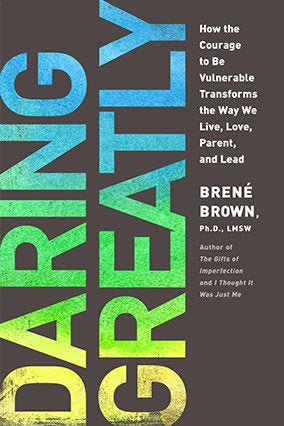By Leigh Newman
We sifted through recent self-help books and found the can-do strategies to help you become more successful, calmer, happier, more focused and more connected to others -- and to yourself.
What You Want: To realize a dream or a passion project
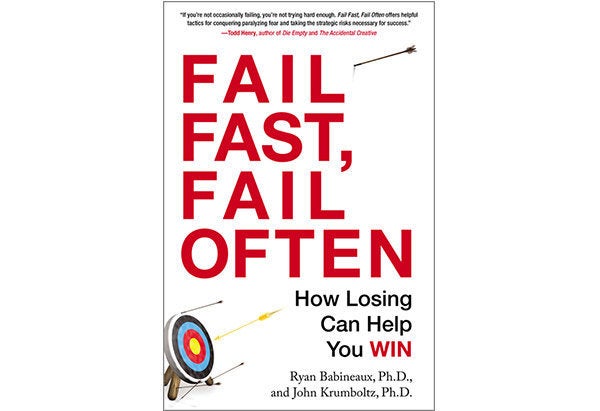
What to Try: Failing forward
The problem with trying something new (like: photography) is that we approach it, hoping for instant success. Instead, write Ryan Babineaux PhD and John Krumboltz PhD in their new book, Fail Fast, Fail Often it helps us to bomb out over and over, each time using the experience to "fail forward." The co-creators of Stanford University's continuing studies course of the same name outline a specific process:
1. Find something that you'd like to try but haven't because you're afraid of splatting on your face. (Example: "I want take pictures for a living.")
2. Find a way to fail at it as quickly as possible. (For example, "I'm going to take pictures at my cousin's wedding next week.")
3. Do it and tell people you're new to this. (For example, "While I'm snapping away, I'll tell everybody I'm a beginner and ask what people think about the shots").
4. Go home and analyze ("What came naturally, and what do I need to work on? What was fun -- and what wasn't?")
5. Set another challenge and fail again ("Next time, I'll take pictures at a wedding and get paid for it"). By the shifting your focus to learning something as a beginner (instead of, say, producing something amazing), write the authors, you will perform better, enjoy yourself more, find ways to learn from your stumbles -- all of which leads you to succeed much more quickly.
The problem with trying something new (like: photography) is that we approach it, hoping for instant success. Instead, write Ryan Babineaux PhD and John Krumboltz PhD in their new book, Fail Fast, Fail Often it helps us to bomb out over and over, each time using the experience to "fail forward." The co-creators of Stanford University's continuing studies course of the same name outline a specific process:
1. Find something that you'd like to try but haven't because you're afraid of splatting on your face. (Example: "I want take pictures for a living.")
2. Find a way to fail at it as quickly as possible. (For example, "I'm going to take pictures at my cousin's wedding next week.")
3. Do it and tell people you're new to this. (For example, "While I'm snapping away, I'll tell everybody I'm a beginner and ask what people think about the shots").
4. Go home and analyze ("What came naturally, and what do I need to work on? What was fun -- and what wasn't?")
5. Set another challenge and fail again ("Next time, I'll take pictures at a wedding and get paid for it"). By the shifting your focus to learning something as a beginner (instead of, say, producing something amazing), write the authors, you will perform better, enjoy yourself more, find ways to learn from your stumbles -- all of which leads you to succeed much more quickly.
What You Want: To be more focused
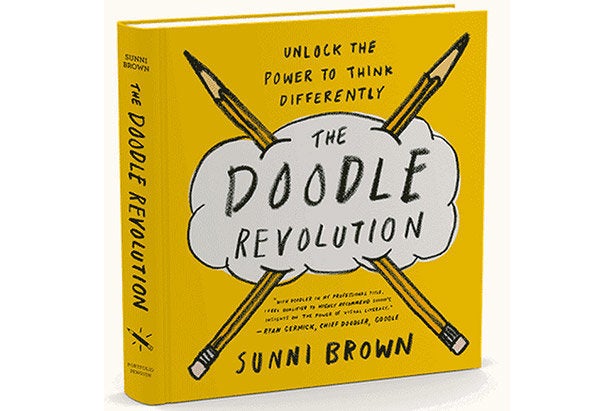
What to Try: Doodling
The next time you're in a long meeting or conference, consider picking up a pen and drawing weird, flowery, scribbly thingamajigs on the edge of your agenda. Doodling, writes Sunni Brown, whose TED talk on the subject has been seen by more than 1.1 million people, can actually increase your ability to retain and remember information. As she describes in her book Doodle Revolution, when researchers at the University of Plymouth placed people on a monotonous phone call, some of them doodled, others didn't. Later, on a surprise memory test, the doodlers absorbed and recalled 29 percent more of the content than the nondoodlers. "Rather than diverting our attention away from a topic (what our culture believes is happening when people doodle)," says Brown, "doodling can serve as an anchoring task -- a task that can occur simultaneously with another task -- and act as a preemptive measure to keep us from losing focus on a boring topic."
The next time you're in a long meeting or conference, consider picking up a pen and drawing weird, flowery, scribbly thingamajigs on the edge of your agenda. Doodling, writes Sunni Brown, whose TED talk on the subject has been seen by more than 1.1 million people, can actually increase your ability to retain and remember information. As she describes in her book Doodle Revolution, when researchers at the University of Plymouth placed people on a monotonous phone call, some of them doodled, others didn't. Later, on a surprise memory test, the doodlers absorbed and recalled 29 percent more of the content than the nondoodlers. "Rather than diverting our attention away from a topic (what our culture believes is happening when people doodle)," says Brown, "doodling can serve as an anchoring task -- a task that can occur simultaneously with another task -- and act as a preemptive measure to keep us from losing focus on a boring topic."
What You Want: To be more engaged and joyful about what you're doing
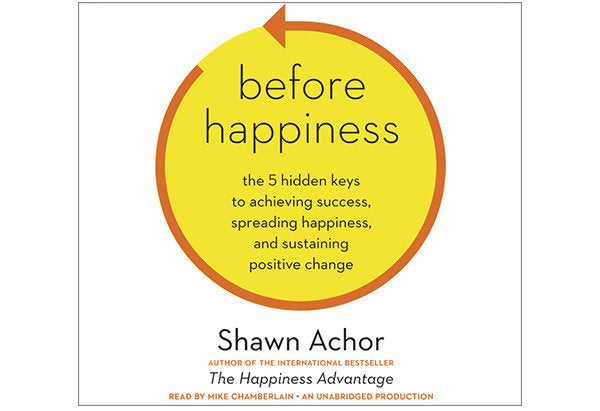
What to Try: A happiness graph
Meaning is what makes us happier (and usually more successful) in our professional and personal lives. And yet we don't always immediately recognize what is most meaningful to us -- which is why Harvard researcher Shawn Achor's designed an experiment called the "happiness graph. How to do it: Think about the last year, then sketch a line graph with two axes, the vertical one for happiness and the horizontal one for time. "So, if you got a promotion in January, and that made you happy, that should be a high point on the graph," he writes in Before Happiness: The 5 Hidden Keys to Achieving Success, Spreading Happiness, and Sustaining Positive Change. "Or, if you were miserable in January but then in early February your football team won the Super Bowl, you'd draw a spike," and so on, all the way through December. Then, label the events that determined your highs and lows.
"The events you include can uncover important yet hidden nodes of meaning in your life," writes Achor. Some people's happiness fluctuates around family events, others around world events, still others around work events. "Whatever our individual graphs look like, they help us understand what parts of our lives our happiness (or conversely, our unhappiness) depends on." The question then becomes: Are you spending your time on your points of highest meaning? And if not, how can you change things in your life to let you focus more on those?
Meaning is what makes us happier (and usually more successful) in our professional and personal lives. And yet we don't always immediately recognize what is most meaningful to us -- which is why Harvard researcher Shawn Achor's designed an experiment called the "happiness graph. How to do it: Think about the last year, then sketch a line graph with two axes, the vertical one for happiness and the horizontal one for time. "So, if you got a promotion in January, and that made you happy, that should be a high point on the graph," he writes in Before Happiness: The 5 Hidden Keys to Achieving Success, Spreading Happiness, and Sustaining Positive Change. "Or, if you were miserable in January but then in early February your football team won the Super Bowl, you'd draw a spike," and so on, all the way through December. Then, label the events that determined your highs and lows.
"The events you include can uncover important yet hidden nodes of meaning in your life," writes Achor. Some people's happiness fluctuates around family events, others around world events, still others around work events. "Whatever our individual graphs look like, they help us understand what parts of our lives our happiness (or conversely, our unhappiness) depends on." The question then becomes: Are you spending your time on your points of highest meaning? And if not, how can you change things in your life to let you focus more on those?
Advertisement
What You Want: To have more free time and less stress
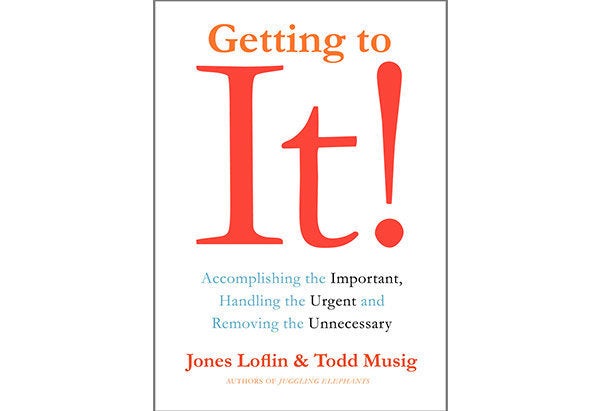
What to Try: Make a paid-to-do list
Step 1: Make a list of everything you do at work, write corporate trainers Jones Loflin and Todd Musig, who train Fortune 500 companies in time management and work-life balance. (If you are the director of a candy factory, for example, you might write down: monitor chocolate and butterscotch makers, advise the wrapping designer, plan factory expansion, make sure the tasters don't taste too enthusiastically). As the two describe in Getting to It: Accomplishing the Important, Handling the Urgent, and Removing the Unnecessary, their clients typically start the list with their current workload, then mention other upcoming activities, then lastly remember "all the smaller tasks that dot their plates like peas." After listening to their clients' frustrations for a short while, Loflin and Musig then ask them, "What are you paid to do?" In that moment, the clients usually realize how much of their day is spent on problems they inherited, tasks no one else wants to (or can) do and putting out minor (but avoidable) fireballs.
Step 2: "Dust off your job description," the two write, "and review your most recent evaluation." Make another list of the four or five things you're paid to do. If you give those your full attention, your performance on other to-dos may not matter as much. You'll do better at what your boss needs you most for. P.S. "This strategy," the two write, "also applies to the other roles in your life. What are the three or four things you can do as a parent, neighbor, volunteer, baseball coach, Sunday-school teacher, gardener, son-in-law, dancer, and so on, that make the greatest impact? Three or four key things are doable. Ten or 12 can be overwhelming."
Step 1: Make a list of everything you do at work, write corporate trainers Jones Loflin and Todd Musig, who train Fortune 500 companies in time management and work-life balance. (If you are the director of a candy factory, for example, you might write down: monitor chocolate and butterscotch makers, advise the wrapping designer, plan factory expansion, make sure the tasters don't taste too enthusiastically). As the two describe in Getting to It: Accomplishing the Important, Handling the Urgent, and Removing the Unnecessary, their clients typically start the list with their current workload, then mention other upcoming activities, then lastly remember "all the smaller tasks that dot their plates like peas." After listening to their clients' frustrations for a short while, Loflin and Musig then ask them, "What are you paid to do?" In that moment, the clients usually realize how much of their day is spent on problems they inherited, tasks no one else wants to (or can) do and putting out minor (but avoidable) fireballs.
Step 2: "Dust off your job description," the two write, "and review your most recent evaluation." Make another list of the four or five things you're paid to do. If you give those your full attention, your performance on other to-dos may not matter as much. You'll do better at what your boss needs you most for. P.S. "This strategy," the two write, "also applies to the other roles in your life. What are the three or four things you can do as a parent, neighbor, volunteer, baseball coach, Sunday-school teacher, gardener, son-in-law, dancer, and so on, that make the greatest impact? Three or four key things are doable. Ten or 12 can be overwhelming."
What You Want: To get control of your rage
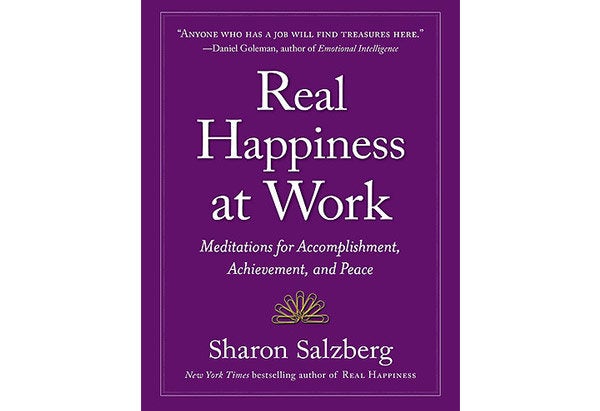
What to Try: Recognize anger (instead of what's making you angry)
"Let's say a rush of intense anger overtakes you," writes meditation teacher Sharon Salzberg. Normally, as she explains in Real Happiness at Work: Meditations for Accomplishment, Achievement, and Peace, we think about the person or thing that made us mad (for example, "They did this, so I'm going to do that and my vengeful act will destroy them!") or we beat ourselves up (for example, "I'm such a terrible person, I'm so awful. I can't believe I'm so angry. I've been in therapy for 10 years. How could I still be angry?") But what if you could take human beings out of the equation? What if the first thing you said was, "Oh...this is anger." Identifying the feeling allows you to look at the anger (not you or the other person) and, as Salzberg writes, this decreases its power to take over our minds since we stop being busy reacting. What we notice, she adds, is that anger is not just one thing; it is made up of moments of sadness, moments of fear, moments of frustration, moments of panic. Understanding that it is many different things also allows for many different ways to end it.
"Let's say a rush of intense anger overtakes you," writes meditation teacher Sharon Salzberg. Normally, as she explains in Real Happiness at Work: Meditations for Accomplishment, Achievement, and Peace, we think about the person or thing that made us mad (for example, "They did this, so I'm going to do that and my vengeful act will destroy them!") or we beat ourselves up (for example, "I'm such a terrible person, I'm so awful. I can't believe I'm so angry. I've been in therapy for 10 years. How could I still be angry?") But what if you could take human beings out of the equation? What if the first thing you said was, "Oh...this is anger." Identifying the feeling allows you to look at the anger (not you or the other person) and, as Salzberg writes, this decreases its power to take over our minds since we stop being busy reacting. What we notice, she adds, is that anger is not just one thing; it is made up of moments of sadness, moments of fear, moments of frustration, moments of panic. Understanding that it is many different things also allows for many different ways to end it.
What You Want: To negotiate better

What to try: Flashing forward
When we're trying to work a deal -- be it with a contractor redoing the house or a neighbor who wants to split a new power mower -- we usually think of what might go wrong. We may even name a few ideas (such as, the contractor might go overbudget or the neighbor might forget to fill up the mower with gas). But that is not enough, writes Harvard Business School professor Michael Wheeler in The Art of Negotiation: How to Improvise Agreement in a Chaotic World.
Instead, pretend the negotiation has started. Now imagine there's been a major problem. Ask yourself, "What will it be?"(maybe the contractor wants to install a $700 toilet instead of a $100 one, for example). Rather than having a fuzzy idea of something that might go south, you're now assuming something will, which fosters "an attitude of watchfulness, so you'll be quicker to see if/when the process is going awry. If you're alert, you may be able to put it back on track. If not, you'll have a plan B."
Now flash forward again. This time imagine that there's been some sort of wonderful surprise in your talks. What is it? "Studies show that negotiators who set lofty goals get better deals," writes Wheeler, who also edits the Negotiation Journal at Harvard Law School. "Instead of contenting themselves with outcomes they can live with, these negotiators focus instead on how much the other party might be prepared to grant. In addition, imagining upside scenarios prepare you to recognize opportunities and find creative solutions."
When we're trying to work a deal -- be it with a contractor redoing the house or a neighbor who wants to split a new power mower -- we usually think of what might go wrong. We may even name a few ideas (such as, the contractor might go overbudget or the neighbor might forget to fill up the mower with gas). But that is not enough, writes Harvard Business School professor Michael Wheeler in The Art of Negotiation: How to Improvise Agreement in a Chaotic World.
Instead, pretend the negotiation has started. Now imagine there's been a major problem. Ask yourself, "What will it be?"(maybe the contractor wants to install a $700 toilet instead of a $100 one, for example). Rather than having a fuzzy idea of something that might go south, you're now assuming something will, which fosters "an attitude of watchfulness, so you'll be quicker to see if/when the process is going awry. If you're alert, you may be able to put it back on track. If not, you'll have a plan B."
Now flash forward again. This time imagine that there's been some sort of wonderful surprise in your talks. What is it? "Studies show that negotiators who set lofty goals get better deals," writes Wheeler, who also edits the Negotiation Journal at Harvard Law School. "Instead of contenting themselves with outcomes they can live with, these negotiators focus instead on how much the other party might be prepared to grant. In addition, imagining upside scenarios prepare you to recognize opportunities and find creative solutions."
Advertisement
What You Want: To stop the racing, live at a more comfortable pace
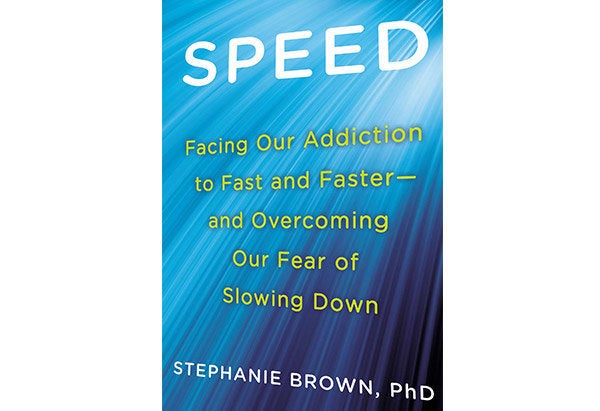
What to Try: Creating a tech "mudroom"
The breakneck pace at which we move today has become as seductive as alcohol or drugs, writes addiction specialist and psychologist, Stephanie Brown, PhD, in Speed: Facing our Addiction to Fast and Faster and Overcoming Our Fear of Slowing Down, not to mention it sucks us into stress levels that can impair our immune systems and "even rewire the brain, leaving us more vulnerable to anxiety and depression." Her favorite solution, which she borrowed from a client who grew up in Oregon where families leave wet boots in a mudroom by the front door: Create a space by your entrance where everyone places their cell phone, tablets and laptops before coming inside. Then set up tech-permissible times (say, after homework but before dinner) and tech-free times (say, Sunday nights). Watch what happens, including the sentences that result without one embarrassing auto correction.
The breakneck pace at which we move today has become as seductive as alcohol or drugs, writes addiction specialist and psychologist, Stephanie Brown, PhD, in Speed: Facing our Addiction to Fast and Faster and Overcoming Our Fear of Slowing Down, not to mention it sucks us into stress levels that can impair our immune systems and "even rewire the brain, leaving us more vulnerable to anxiety and depression." Her favorite solution, which she borrowed from a client who grew up in Oregon where families leave wet boots in a mudroom by the front door: Create a space by your entrance where everyone places their cell phone, tablets and laptops before coming inside. Then set up tech-permissible times (say, after homework but before dinner) and tech-free times (say, Sunday nights). Watch what happens, including the sentences that result without one embarrassing auto correction.
